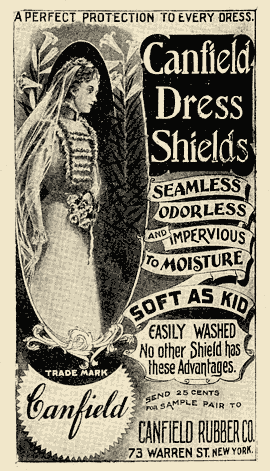Life's Facts as Startling as Fiction, Says Writer, 76
by Ruth Snyder
Anna Katharine Green, for Fifty Years Author of Mystery Stories, Optimistic on Love, Marriage and Progress.
NEW YORK, May 12.—Anna Katharine Green, the author of “The Leavenworth Case,” “The House of the Whispering Pines,” and other mystery stories, was in town recently. When the reader realizes that this remarkable and versatile writer is 76 years old and that she has been writing mystery stories for the last fifty years and is still writing just as thrilling best sellers as ever, he will want to know, as we did, where in the world a person can get the material for a half century of mystery and adventure stories.
So come with us up to the Murray Hill hotel and let us see and talk with this bright little woman.
She enters the room with an energetic and eager step. When a person can step along as briskly as as “peppily” as Anna Katharine Green (registered on the hotel’s list as Mrs. Rohlfs), you at once realize that life is still holding forth eons of expectations for her. Her face is smooth and rosy and radiant above the blackness of her very becoming dark gown. Looking into her blue eyes, which are the color of the sky on a bright May morning, you see that this woman would rather been considered the age she looks rather than the age she is. Very feminine—and very natural! But what pride, too, she must have in the fact that she has been writing romances and mystery stories for fifty years.
“What is the secret?” we asked, after we had been comfortably seated in one of the parlors of the hotel. “Where in the world do you get all your ideas from? And how can you keep up this terrific pace?”
Mrs. Rohlfs smiled a sweet, gentle smile at this onrush of questions.
“Life is full of mystery,” she answered at last, softly and in a faint, faraway voice. “Life is more remarkable than fiction. Fact in life is fully as startling as anything in fiction if one would only realize it. Why, sometimes I have had people come to me with half-formed ideas of some remarkable thing that has happened in life, and I have had to moderate it in order to make it sound plausible.
“The first thing I do before writing a story,” Anna Katharine Green continued, “is to get an idea. The idea may be something I have heard or seen some place, or it may just come to me”—sweeping in an idea with a gentle motion of her hand—“then the story just gathers itself. I never begin a story until I see the whole story before me. Of course, sometimes I have to change it a great deal, elaborate in one place and tone down in another. But, at any rate, I must know my end before I know my beginning. I never write a single story unless I am in the mood for it. I can not. I have to feel and live the parts.”
“Are your mystery stories today along the same line as the ones you wrote many years ago—or do you have to change them to meet the world as it is today?”
“My last story, “The Step on the Stairs,” is considered by the publishers to be my best work. My theory in this book is that ‘All the world loves a lover’ and all the world likes to read about a great lover. Time will never change that, but—there is a high type of love in this story.”
This “but,” uttered with a half-apologetic smile, gave us an inkling that Mrs. Rohlfs had her own opinion on the type of love offered today, so we led around to this point.
“The greatest mistake a girl can make is to marry in haste,” Mrs. Rohlfs declared, “and that, in my opinion, is the cause of a great many unhappy marriages. Girls are a little hasty. They see a man, they admire him—but they do not study his instincts and ideals. They do not know the character of the man they intend to marry. One excellent rule for a girl to follow is to find out what a man is to his mother and to his sisters. Know what the man is himself—not the super-man he appears when bringing his first love to a girl.
“Of course, one judges life by the associations and conditions in one’s own life,” the author explained. “I have been very fortunate and have seen more of happy marriages than otherwise. And happy associations affect one’s outlook on life.”
“You said that your publishers consider your last book to be your best,” we reminded the author. “Then do you suppose a woman will produce her best works after she is 40?”
“That, of course, depends to a great extent on the individual,” Mrs. Rohlfs replied. “Her life is going to make or mar her career, but, in the main, I would say that a younger woman is handicapped in the earlier struggles and stresses of life and does not find herself until she becomes more mellow.”
Mrs. Rohlfs has a son, Roland Rohlfs, who made the first high record flight in history, and so we asked Roland’s mother her opinion on the recent ocean-[ILLEGIBLE] in twenty-six hours.
“The flight interested me very much, indeed,” she declared. “It is remarkable, and—oh—but I don’t know what is going to happen next. With all this merry-go-round and hustle-bustle of life today (Mrs. Rohlfs made wild circles in the air by way of illustration) why, I’m just dizzy from it all.”





